
HRT - Hormone Replacement Therapy
Aging is inevitable, and for many, it signals the beginning of a new chapter - one where you cross off bucket list items and live life to the fullest, on your own terms. However, for some women, aging is a horrible prospect, filled with chronic fatigue, irritability, and inability to perform in the bedroom. If you're concerned about life in middle age and beyond, we've got great news: there are easy, proven steps that you can take to help stop the negative effect of aging.
Global Life Rejuvenation was founded to give women a new lease on life - one that includes less body fat, fewer mood swings, and more energy as you age. If you're ready to look and feel younger, it's time to consider HRT (hormone replacement therapy), and growth hormone peptides. These therapies for men and women are effective, safe, and customized to fit your goals, so you can keep loving life as you get older.
HRT, and growth hormone peptide therapies bridge the gap between your old life and the more vibrant, happier version of you. With a simple click or call, you can be well on your way to a brighter future. After all, you deserve to be the one in charge of your wellness and health. Now, you have the tools to do so - backed by science and applied by our team of HRT experts with more than 13 years of experience.

Hormone replacement therapy
- Unlock A More Youthful You With Testosterone Replacement Therapy In Manhattan, NY
- TRT and Anti-Aging Medicine for Men
- Common Symptoms of Low Testosterone
- Benefits of TRT and Anti-Aging Medicine for Men
- Fight Back Against Male Menopause
- Reverse Aging with Growth Hormone Peptides in Manhattan, NY
- Your New, Youthful Lease on Life Starts Here
 Have A Question?
866-739-5645
Have A Question?
866-739-5645
What is HRT?
As women age, their hormones begin to go through changes that affect their day-to-day lives. For women, hormone deficiency and imbalance usually occur during menopause and can cause chronic fatigue, hot flashes, and mood swings, among other issues. Hormone replacement therapy helps correct hormone imbalances in women, helping them feel more vibrant and virile as they age.
Often, HRT treatments give patients enhanced quality of life that they didn't think was possible - even in their 60's and beyond. The benefits for women are numerous and are available today through Global Life Rejuvenation.
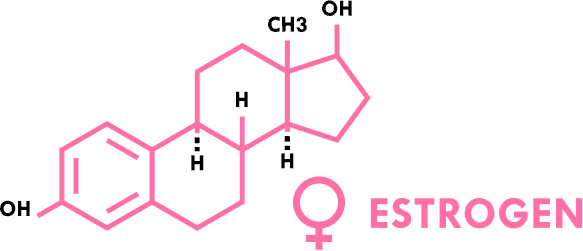
HRT and Anti-Aging Medicine for Women in Manhattan, NY
As women age, their bodies begin to go through significant changes that affect their quality of life. This change is called menopause and marks the end of a woman's menstrual cycle and reproduction ability. Though there is no specific age when this change occurs, the average age of menopause onset is 51 years old. However, according to doctors, menopause officially starts 12 months after a woman's final period. During the transition to menopause, women's estrogen and other hormones begin to deplete.
As that happens, many women experience severe symptoms. These symptoms include:
- Hot Flashes
- Chronic Fatigue
- Incontinence
- Trouble Sleeping
- Dryness
- Muscle Loss
- Fat Gain
- Mood Swings
The symptoms of hormone deficiency can be concerning and scary for both women and their spouses. However, if you're getting older and notice some of these symptoms, there is reason to be hopeful. Hormone replacement therapy and anti-aging medicine for women can correct imbalances that happen during menopause. These safe, effective treatments leave you feeling younger, healthier, and more vibrant.
What Causes Menopause?
The most common reason for menopause is the natural decline in a female's reproductive hormones. However, menopause can also result from the following situations:
Oophorectomy
This surgery, which removes a woman's ovaries, causes immediate menopause. Symptoms and signs of menopause in this situation can be severe, as the hormonal changes happen abruptly.
Chemotherapy
Cancer treatments like chemotherapy can induce menopause quickly, causing symptoms to appear shortly after or even during treatment.
Ovarian Insufficiency
Also called premature ovarian failure, this condition is essentially premature menopause. It happens when a woman's ovaries quit functioning before the age of 40 and can stem from genetic factors and disease. Only 1% of women suffer from premature menopause, but HRT can help protect the heart, brain, and bones.
Common Issues for Women During Menopause
For many women, menopause is a trying time that can be filled with many hormonal hurdles to jump through. A little knowledge can go a long way, whether you're going through menopause now or are approaching "that" age.
Here are some of the most common issues that women experience during menopause:
Depression
If you're a woman going through menopause and find that you have become increasingly depressed, you're not alone. It's estimated that 15% of women experience depression to some degree while going through menopause. What many women don't know is that depression can start during perimenopause, or the years leading up to menopause.
Depression can be hard to diagnose, especially during perimenopause and menopause. However, if you notice the following signs, it might be time to speak with a physician:
- Mood Swings
- Inappropriate Guilt
- Chronic Fatigue
- Too Much or Too Little Sleep
- Lack of Interest in Life
- Overwhelming Feelings
Remember, if you're experiencing depression, you're not weak or broken - you're going through a very regular emotional experience. The good news is that with proper treatment from your doctor, depression isn't a death sentence. And with HRT and anti-aging treatment for women, depression could be the catalyst you need to enjoy a new lease on life.
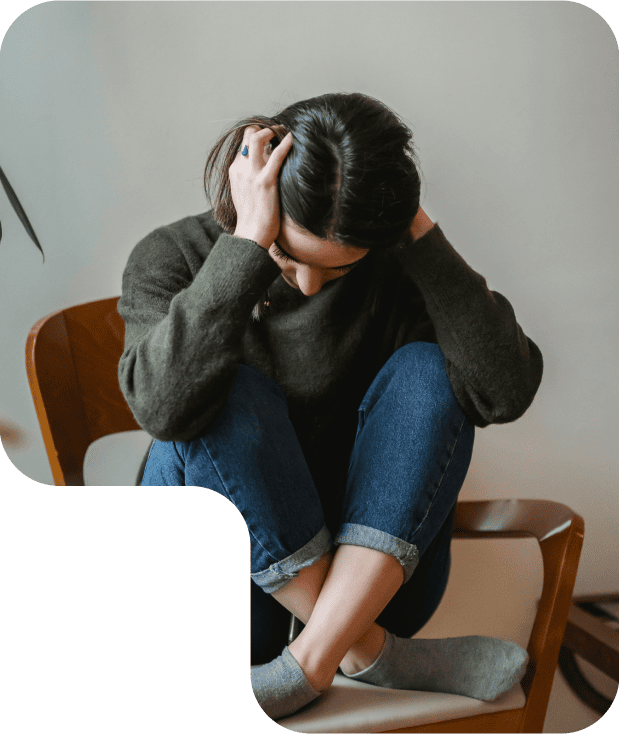
Hot Flashes
Hot flashes - they're one of the most well-known symptoms of menopause. Hot flashes are intense, sudden feelings of heat across a woman's upper body. Some last second, while others last minutes, making them incredibly inconvenient and uncomfortable for most women.
Symptoms of hot flashes include:
- Sudden, Overwhelming Feeling of Heat
- Anxiety
- High Heart Rate
- Headache
- Nausea
- Dizziness
Typically, hot flashes are caused by a lack of estrogen. Low estrogen levels negatively affect a woman's hypothalamus, the part of the brain that controls body temperature and appetite. Low estrogen levels cause the hypothalamus to incorrectly assume the body is too hot, dilating blood vessels to increase blood flow. Luckily, most women don't have to settle for the uncomfortable feelings that hot flashes cause. HRT treatments for women often stabilize hormones, lessening the effects of hot flashes and menopause in general.

Mood Swings
Mood swings are common occurrences for most people - quick shifts from happy to angry and back again, triggered by a specific event. And while many people experience mood swings, they are particularly common for women going through menopause. That's because, during menopause, the female's hormones are often imbalanced. Hormone imbalances and mood swings go hand-in-hand, resulting in frequent mood changes and even symptoms like insomnia.
The rate of production of estrogen, a hormone that fluctuates during menopause, largely determines the rate of production the hormone serotonin, which regulates mood, causing mood swings.
Luckily, HRT and anti-aging treatments in Manhattan, NY for women work wonders for mood swings by regulating hormone levels like estrogen. With normal hormone levels, women around the world are now learning that they don't have to settle for mood swings during menopause.

Weight Gain
Staying fit and healthy is hard for anyone living in modern America. However, for women with hormone imbalances during perimenopause or menopause, weight gain is even more serious. Luckily, HRT treatments for women coupled with a physician-led diet can help keep weight in check. But which hormones need to be regulated?
- Estrogen
- Progesterone
- Ongoing Stress
During menopause, estrogen levels are depleted. As such, the body must search for other sources of estrogen. Because estrogen is stored in fat, your body believes it should increase fat production during menopause. Estrogen also plays a big part in insulin resistance, which can make it even harder to lose weight and keep it off.
Progesterone levels are also depleted during menopause. Progesterone depletion causes bloating and water retention, while loss of testosterone limits the body's ability to burn calories.
Stress makes our bodies think that food is hard to come by, putting our bodies in "survival mode". When this happens, cortisol production is altered. When cortisol timing changes, the energy in the bloodstream is diverted toward making fat. With chronic stress, this process repeatedly happens, causing extensive weight gain during menopause.

Low Libido
Lowered sexual desire
three words most men and women hate to hear. Unfortunately, for many women in perimenopausal and menopausal states, it's just a reality of life. Thankfully, today, HRT and anti-aging treatments Manhattan, NY can help women maintain a normal, healthy sex drive. But what causes low libido in women, especially as they get older?
The hormones responsible for low libido in women are progesterone, estrogen, and testosterone.
Progesterone production decreases during perimenopause, causing low sex drive in women. Lower progesterone production can also cause chronic fatigue, weight gain, and other symptoms. On the other hand, lower estrogen levels during menopause lead to vaginal dryness and even vaginal atrophy or loss of muscle tension.
Lastly, testosterone plays a role in lowered libido. And while testosterone is often grouped as a male hormone, it contributes to important health and regulatory functionality in women. A woman's testosterone serves to heighten sexual responses and enhances orgasms. When the ovaries are unable to produce sufficient levels of testosterone, it often results in a lowered sex drive.

Vaginal Dryness
Often uncomfortable and even painful, vaginal dryness is a serious problem for sexually active women. However, like hair loss in males, vaginal dryness is very common - almost 50% of women suffer from it during menopause.
Getting older is just a part of life, but that doesn't mean you have to settle for the side effects. HRT and anti-aging treatments for women correct vaginal dryness by re-balancing estrogen, progesterone, and testosterone. When supplemented with diet and healthy living, your vagina's secretions are normalized, causing discomfort to recede.

Fibroids
Uterine fibroids
They're perhaps the least-known symptom of menopause and hormone imbalances in women. That's because these growths on the uterus are often symptom-free. Unfortunately, these growths can be cancerous, presenting a danger for women as they age.
Many women will have fibroids at some point. Because they're symptomless, they're usually found during routine doctor exams. Some women only get one or two, while others may have large clusters of fibroids. Because fibroids are usually caused by hormone imbalances, hysterectomies have been used as a solution, forcing women into early menopause.
Advances in HRT and anti-aging medicine for women give females a safer, non-surgical option without having to experience menopause early. At Global Life Rejuvenation, our expert physicians will implement a customized HRT program to stabilize your hormones and reduce the risk of cancerous fibroid growth.
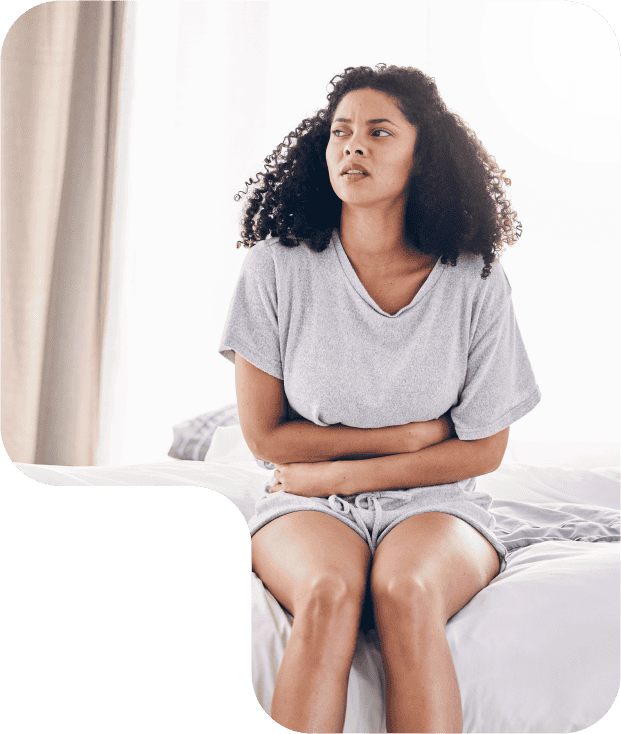
Endometriosis
Endometriosis symptoms are much like the effects of PMS, and include pelvic pain, fatigue, cramping, and bloating. While doctors aren't entirely sure what causes this painful, uncomfortable condition, most agree that hormones - particularly xenoestrogens - play a factor.
Endometriosis symptoms are much like the effects of PMS and include pelvic pain, fatigue, cramping, and bloating. While doctors aren't entirely sure what causes this painful, uncomfortable condition, most agree that hormones - particularly xenoestrogens - play a factor.
Xenoestrogen is a hormone that is very similar to estrogen. Too much xenoestrogen is thought to stimulate endometrial tissue growth. HRT for women helps balance these hormones and, when used with a custom nutrition program, can provide relief for women across the U.S.


Is HRT for Women the Right Answer?
Hormone stability is imperative for a healthy sex drive and for a normal, stress-free life during menopause. HRT and anti-aging treatments for women balance the hormones that your body has altered due to perimenopause or menopause.
HRT for women is a revolutionary step in helping women live their best lives, even as they grow older. However, at Global Life Rejuvenation, we know that no two patients are the same. That's why we specialize in holistic treatments that utilize HRT, combined with healthy nutrition, supplements, and fitness plans that maximize hormone replacement treatments.
If you've been suffering through menopause, is HRT the answer? That's hard to say without an examination by a trusted physician, but one thing's for sure. When a woman balances her hormone levels, she has a much better shot at living a regular life with limited depression, weight gain, mood swings, and hot flashes.
Here are just a few additional benefits of HRT and anti-aging treatments for females:
Benefits of HRT and Anti-Aging Medicine for Women in Manhattan, NY
Hormone imbalance causes a litany of issues. But with anti-aging treatments for women, females can better process calcium, keep their cholesterol levels safe, and maintain a healthy vagina. By replenishing the body's estrogen supply, HRT can relieve symptoms from menopause and protect against osteoporosis. But that's just the start.
Global Life Rejuvenation's patients report many more benefits of HRT and anti-aging medicine for women:
- Fewer Mood Swings
- Thicker Hair
- Stronger Bones
- Less Body Fat
- More Energy
- More Stamina
- Increased Sex Drive and Pleasure Sensations
- Better Cognitive Functions
- Improved Pain Receptors
- Less Hot Flashes and Night Sweats
- Lower Triglycerides
- Fewer Bladder Infections
If you're ready to feel better, look better, and recapture the vitality of your youth, it's time to contact Global Life Rejuvenation. It all starts with an in-depth consultation, where we will determine if HRT and anti-aging treatments for women are right for you. After all, every patient's body and hormone levels are different. Since all our treatment options are personalized, we do not have a single threshold for treatment. Instead, we look at our patient's hormone levels and analyze them on a case-by-case basis.


HRT from Global Life Rejuvenation
At Global Life Rejuvenation, we help women rediscover their youth with HRT treatment for women. We like to think of ourselves as an anti-aging concierge service, guiding and connecting our patients to the most qualified HRT physicians available. With customized HRT treatment plan for women, our patients experience fewer menopausal symptoms, less perimenopause & menopause depression, and often enjoy a more youth-like appearance.
Reverse Aging with Growth Hormone Peptides
Growth hormone peptides are an innovative therapy that boosts the natural human growth hormone production in a person's body. These exciting treatment options help slow down the aging process and give you a chance at restoring your youth.
Sermorelin is a synthetic hormone peptide, like GHRH, which triggers the release of growth hormones. When used under the care of a qualified physician, Sermorelin can help you lose weight, increase your energy levels, and help you feel much younger.
Human growth hormone (HGH) therapy has been used for years to treat hormone deficiencies. Unlike HGH, which directly replaces declining human growth hormone levels, Sermorelin addresses the underlying cause of decreased HGH, stimulating the pituitary gland naturally. This approach keeps the mechanisms of growth hormone production active.
Benefits of Sermorelin include:
- Better Immune Function
- Improved Physical Performance
- More Growth Hormone Production
- Less Body Fat
- Build More Lean Muscle
- Better Sleep
Ipamorelin helps to release growth hormones in a person's body by mimicking a peptide called ghrelin. Ghrelin is one of three hormones which work together to regulate the growth hormone levels released by the pituitary gland. Because Ipamorelin stimulates the body to produce growth hormone, your body won't stop its natural growth hormone production, which occurs with synthetic HGH.
Ipamorelin causes growth hormone secretion that resembles natural release patterns rather than being constantly elevated from HGH. Because ipamorelin stimulates the natural production of growth hormone, our patients can use this treatment long-term with fewer health risks.
One of the biggest benefits of Ipamorelin is that it provides significant short and long-term benefits in age management therapies. Ipamorelin can boost a patient's overall health, wellbeing, and outlook on life.
When there is an increased concentration of growth hormone by the pituitary gland, there are positive benefits to the body. Some benefits include:
- Powerful Anti-Aging Properties
- More Muscle Mass
- Less Unsightly Body Fat
- Deep, Restful Sleep
- Increased Athletic Performance
- More Energy
- Less Recovery Time for Training Sessions and Injuries
- Enhanced Overall Wellness and Health
- No Significant Increase in Cortisol
Your New, Youthful Lease on Life Starts Here
Whether you are considering our TRT services, HRT for women, or our growth hormone peptide services, we are here to help. The first step to turning back the hand of time starts by contacting Global Life Rejuvenation.
Our friendly, knowledgeable TRT and HRT experts can help answer your questions and walk you through our procedures. From there, we'll figure out which treatments are right for you. Before you know it, you'll be well on your way to looking and feeling better than you have in years!
Request a Consultation

Latest News in Manhattan, NY
New Jersey mayor proposes reverse congestion pricing after new NYC toll: ‘Same opportunity to push the buttons’
Fox Newshttps://nypost.com/2025/01/13/us-news/new-jersey-mayor-proposes-reverse-congestion-pricing-after-new-nyc-toll/
A New Jersey mayor is proposing the idea of a reverse congestion pricing toll after New York City implemented its controversial levy last week.Jersey City Mayor Steven Fulop, who is also running for governor of the Garden State, floated the idea, according to Fox 5 New York.“New Jersey has the same opportunity to push the buttons that New York is pushing against us,” Fulop told the outlet. &...
A New Jersey mayor is proposing the idea of a reverse congestion pricing toll after New York City implemented its controversial levy last week.
Jersey City Mayor Steven Fulop, who is also running for governor of the Garden State, floated the idea, according to Fox 5 New York.
“New Jersey has the same opportunity to push the buttons that New York is pushing against us,” Fulop told the outlet. “We could do that to them, but the goal is to get to a table to have a reasonable solution.”
The mayor said he believes reverse congestion pricing is the appropriate response to New York City’s new toll, which imposes fees on vehicles that enter busy parts of Manhattan as a way to encourage people to take the subway.
“There’s plenty of crossings between Staten Island, New York, Bergen County, Hudson County into New Jersey,” Fulop said. “There’s plenty of opportunities to have the same sort of impact fee that New York is putting on New Jersey.”
Fulop said he believes the money made from reverse congestion pricing should fund New Jersey’s mass transit system, which has suffered from delays and cancellations.
“My view is that New Jersey Transit is a terrible product, and it should be invested in more, and until you get a reliable transportation system in New Jersey, you can’t responsibly think that people are going to take the trains,” Fulop said. “But this was an opportunity to get hundreds of millions of dollars into New Jersey Transit, and I think the governor just took a very easy political approach.”
There was initially the possibility for New Jersey to receive hundreds of millions of dollars from New York City’s new toll, but that fell through amid litigation.
The details of Fulop’s proposal are not yet finalized, but he said gantries or toll sites could be stationed outside tunnels and bridges in New Jersey.
He said that, similar to congestion pricing, there may be exemptions or crossing credits.
It is unclear if New Jersey residents would be required to pay the toll to re-enter their home state like some New Yorkers do for congestion pricing.
Congestion toll cuts time on tunnel crossings, but few effects on NYC traffic
Nikita Biryukovhttps://newjerseymonitor.com/2025/01/13/congestion-toll-cuts-time-on-tunnel-crossings-but-few-effects-on-nyc-traffic/
As the second workweek of congestion pricing begins, supporters of the new tolling program point to speedier commute times as proof the program is working as intended.Commute times at two tunnels taking New Jersey drivers into New York City fell in congestion pricing’s first week, but traffic in the city remained largely static, according to a traffic tracker run by two college students.With few exceptions, crossings through the Holl...
As the second workweek of congestion pricing begins, supporters of the new tolling program point to speedier commute times as proof the program is working as intended.
Commute times at two tunnels taking New Jersey drivers into New York City fell in congestion pricing’s first week, but traffic in the city remained largely static, according to a traffic tracker run by two college students.
With few exceptions, crossings through the Holland and Lincoln tunnels were faster in the first week of congestion pricing, which imposed $9 in additional tolls on car drivers entering Manhattan’s central business district, than before its implementation. Sometimes, crossings through the two tunnels were twice as fast.
“We’re having consistent reports that a.m. peak travel into the CBD is much faster. I think you’ve all heard it,” Metropolitan Transportation Authority CEO Janno Lieber said at a press conference Friday.
Drivers of passenger vehicles who use the two tunnels to enter the congestion pricing zone — that’s below 60th Street — during peak hours can receive a $3 toll credit.
Supporters of congestion pricing have said the policy is meant to reduce gridlock and pollution in Manhattan.
But the tracker, developed by Brown University senior Benjamin Moshes and Northeastern University freshman Joshua Moshes (who are brothers), showed virtually no change in traffic inside the tolling zone.
It isn’t immediately clear how congestion pricing affected traffic at other crossings into New York City.
Some opponents of the policy have warned it will push motorists to less-tolled crossings not subject to congestion pricing, like the George Washington Bridge.
Though the tracker does not measure commute times over the George Washington Bridge, it identified longer commutes on some other alternate routes.
“Traffic seems to have increased … on ‘spillover routes’ such as the Hugh L. Carey Tunnel and FDR Drive. These routes are near the congestion zone but are not being charged,” said Benjamin Moshes. “Traffic may have shifted to these from the above routes with decreased travel times.”
Those increases appeared smaller than the drop in traffic on affected crossings, Moshes said.
A spokesperson for the Port Authority of New York and New Jersey, which manages the George Washington Bridge and other Hudson River crossings, said the agency would not have relevant traffic volume data until February.
Lawmakers in New Jersey have railed against congestion pricing, arguing New York was seeking to tax New Jersey residents to fill a $15 billion hole in the Metropolitan Transportation Authority’s capital budget while shifting Big Apple pollution to the Garden State.
Gov. Phil Murphy has challenged congestion pricing in court with claims that federal authorities failed to properly weigh its impact on air quality in New Jersey. His spokespeople did not respond to a request for comment.
Though New York Gov. Kathy Hochul in June suspended an earlier proposal that would have immediately set congestion tolls to $15, tolls will reach that level in 2031 after rising to $12 per crossing in 2028.
[subscribe width=”full” align=”right” message=””/
Our stories may be republished online or in print under Creative Commons license CC BY-NC-ND 4.0. We ask that you edit only for style or to shorten, provide proper attribution and link to our website. AP and Getty images may not be republished. Please see our republishing guidelines for use of any other photos and graphics.
Bus times to NY improve, traffic at tunnels drops as congestion pricing kicks in
Colleen Wilsonhttps://www.northjersey.com/story/news/transportation/2025/01/10/congestion-pricing-nyc-bus-times-manhattan-improve-nj/77574192007/
3-minute readAmanda WallaceNorthJersey.com0:001:32Here's how one Cranford-based business owner described the impact of Manhattan's new congestion pricing toll program so far: It's like "running buses in Wichita."Joe Colangelo, founder and CEO of the private commuter bus company Boxcar, said the commute times for all six bus routes from Morris, Essex, Uni...
3-minute read
NorthJersey.com
Here's how one Cranford-based business owner described the impact of Manhattan's new congestion pricing toll program so far: It's like "running buses in Wichita."
Joe Colangelo, founder and CEO of the private commuter bus company Boxcar, said the commute times for all six bus routes from Morris, Essex, Union and Bergen counties into midtown Manhattan have significantly improved this week since the congestion pricing toll went into effect.
Plus, the buses have fully booked up since the new tolling program to enter the city center went live early last Sunday morning.
Boxcar buses normally make five stops across Manhattan before going through the Lincoln Tunnel during the afternoon commute, which used to take about 30 minutes. In the first few days of the week, Colangelo said, it took 12 to 14 minutes.
Story continues below photo gallery.
"This is going to lead to us adding buses very quickly and expanding to other areas much more quickly than we would have otherwise," Colangelo said. "We did more rides yesterday than we did when the trains were down for three straight days" last summer.
On the other hand, congestion pricing hasn't improved the commute for Monique Baptiste, who drives to Harlem from Clinton Hill in Newark.
She said traffic at the George Washington Bridge used to snarl around 7:30 a.m., but this week it seemed to start piling up around 6 a.m. The George Washington Bridge was not subject to the congestion pricing toll, and some suspected that drivers might reroute — or "toll shop" — by using the bridge to cross the Hudson River.
That was among the concerns highlighted in New Jersey's lawsuit that twice failed in court to stop congestion pricing in the days leading up to its start.
After the experience driving over the bridge, Baptiste switched to the PATH train and said the Exchange Place stop in Jersey City was busier than usual. Cecilia Gomes, another Exchange Place regular, called it "insane" this week.
"The moral of the story is the NJ-NY commute just got a whole lot less reasonable in 2025," Baptiste said.
An array of experiences based on mode of commute
Dell Green, from the Bedminster area, decided to make the switch from car to train to avoid the congestion pricing toll.
"I don't regularly [commute] anymore but I used to drive in, so now I'm not. I'm not paying the $9 to go into Midtown," he said while waiting at NJ Transit's Morristown stop.
Marnie Briskin, who moved to the Morristown area a year and a half ago, said she hasn't noticed a big change during her train commute this week.
"People would say that you can never find parking at the Morristown train station, and I have never had trouble finding parking," she said.
Kevin Hanse uses a variety of NJ Transit buses — the 163/164, 171, 144, 320 — depending on where he's going in New York, and said he's noticed a substantial difference.
"More people are definitely riding the buses, and they're fast through the helix — especially once past the [Jersey City] car traffic," Hanse said. "Buses are beating the timetable, since that was calculated with the old traffic factored in."
First congestion toll of its kind in the US
Manhnattan's is the first tolling program of its kind to launch in the U.S. It's modeled after similar programs in London, Stockholm and Singapore.
The overarching goals are to reduce traffic, improve commutes for drivers, cut down on pollution and, in New York's case, fund capital projects for the Metropolitan Transportation Authority, according to the 2019 state law that mandated its creation.
The $9 peak hour toll for passenger vehicles is charged to those entering Manhattan below 60th Street, including vehicles entering from New Jersey by way of the Lincoln and Holland tunnels.
Colangelo, of Boxcar, is cautiously optimistic about whether the new traffic patterns will hold. He notes that several factors could have affected commutes this week outside of the new toll, including the snowy conditions Monday and return-to-office mandates that coincided with the start of the new year.
Congestion pricing tracker launched by college students
Colangelo and commuters will be keeping a close eye on a congestion pricing tracker that was launched Sunday by two undergraduates, brothers Joshua and Benjamin Moshes, who attend Northeastern University and Brown University, respectively.
The brothers gathered traffic data before and after congestion pricing started, to compare traffic along 19 routes into the Manhattan toll zone, which is 60th Street and below unless drivers stay on perimeter highways, such as the FDR Drive and the West Side Highway.
Some routes, including those using the FDR Drive, jumped in commute times, while others plummeted, such as those using the Brooklyn Bridge, which had been a free crossing to enter Manhattan until congestion pricing. Traffic using the Lincoln and Holland tunnels also dropped.
The goal of the tracker, Joshua Moshes said, was to "make a website with unbiased data so people can make their own decisions" after congestion pricing kicked in.
"We want people to know that good data can lead to better decisions, and we want people to make better-informed decisions based on the tracker," said Benjamin Moshes. "We also know that people from other cities are also following along with this, and we want them to also get some insight."
Here’s how N.J. drivers will get a E-ZPass toll credit for Lower Manhattan congestion fee
Larry Higgshttps://www.nj.com/news/2025/01/heres-how-nj-drivers-will-get-a-e-zpass-toll-credit-for-lower-manhattan-congestion-fee.html
Three days into New York’s congestion pricing program that charges $9 to enter Lower Manhattan and some drivers said they haven’t seen the $3 toll credit when they checked their E-ZPass statements.The confusion is among New Jersey drivers who’ve contacted NJ Advance Media to say they haven’t received toll credit or seen it on their E-ZPa...
Three days into New York’s congestion pricing program that charges $9 to enter Lower Manhattan and some drivers said they haven’t seen the $3 toll credit when they checked their E-ZPass statements.
The confusion is among New Jersey drivers who’ve contacted NJ Advance Media to say they haven’t received toll credit or seen it on their E-ZPass statement.
Some questioned if the toll credit is offered only to drivers with a New York issued E-ZPass.
We asked the MTA and spokesperson Aaron Donovan explained it takes time for the toll credits to show up on drivers E-ZPass statements.
“Any driver with any E-ZPass from any state receives a credit for using any of the four tunnels,” he said. “There is a lag time before the tunnel credits are posted to E-ZPass accounts.”
That lag time is explained in the congestion pricing Frequently Asked Questions page under the E-ZPass heading “How soon will the toll appear on my E-ZPass account?”
For E-ZPass customers outside New York, the congestion toll will post in 4 to 6 days, and crossing credits will post two to four days after that.
New York E-ZPass customers see the toll post in three days and crossing credits post one day after that. Tolls by Mail customers will see the charges when the invoice is sent.
The issue was also covered in the MTA’s our Congestion Relief Zone newsletter that went out to subscribers last week.
The Triborough Bridge and Tunnel Authority is running congestion pricing for the Metropolitan Transportation Authority, which the triborough authority is a part of.
It’s toll rate schedule says non-commercial passenger vehicles entering through the Holland and Lincoln tunnels and paying with E-ZPass will receive a $3 toll credit off the $9 congestion fee.
The MTA also has a congestion pricing toll rate calculator on its website. It asks for the type of vehicle, time you’re entering the city, which tunnel you’re using and which tunnel you plan to leave by. It only asks if you’re paying with an E-ZPass and doesn’t ask where it was issued.
For non-commercial passenger vehicles it show the $3 credit applied for the Holland and Lincoln tunnels for a total of $6.
The MTA has a discount program for two groups of people, low income and people who need to travel to a medical facility in the congestion zone. Those are different than the toll credit.
Drivers have to apply for those discounts and they require a New York issued E-ZPass. The toll credits do not have that requirement.
Congestion pricing, which was made a New York state law in 2019, was created to help reduce traffic, crashes and air pollution in Manhattan and raise $1 billion annually for subway, bus and commuter rail projects by charging a fee for drivers to enter Manhattan’s central business district south of 60th Street.
It is the first such program in the nation. London and Stockholm have similar programs. A projected 80,000 to 110,000 commuters are forecasted to switch from driving to transit to avoid the fee, MTA officials said.
Our journalism needs your support. Please subscribe today to NJ.com.
Larry Higgs may be reached at [email protected]. Follow him on X @CommutingLarry
New Jersey mayor proposes 'reverse congestion pricing' toll
Michael Stallonehttps://www.fox5ny.com/news/nyc-congestion-pricing-tracker-nj-reverse-new-jersey
The BriefCould New Jersey have the last laugh?The gantries are up in Manhattan for the controversial congestion pricing toll, but Jersey City Mayor Steven Fulop, who's also running for NJ governor, is floating the idea of a reverse congestion pricing toll.What they're saying:"New Jersey has the same opportunity to push the buttons that New York is pushing again...
The Brief
Could New Jersey have the last laugh?
The gantries are up in Manhattan for the controversial congestion pricing toll, but Jersey City Mayor Steven Fulop, who's also running for NJ governor, is floating the idea of a reverse congestion pricing toll.
What they're saying:
"New Jersey has the same opportunity to push the buttons that New York is pushing against us," Fulop said. "We could do that to them, but the goal is to get to a table to have a reasonable solution."
NJ mayor talks 'reverse congestion pricing' toll
Jersey City Mayor Steven Fulop, who's also running for NJ governor, is floating the idea of a reverse congestion pricing toll. He joined Good Day New York to explain.
Fulop believes reverse congestion pricing is the answer to New York City's new toll.
"There's plenty of crossings between Staten Island, New York, Bergen County, Hudson County into New Jersey," Fulop said. "There's plenty of opportunities to have the same sort of impact fee that New York is putting on New Jersey."
Big picture view:
The idea is the money will go to fund New Jersey’s mass transit system, plagued by delays and cancelations.
Featured
The landmark initiative, which began on Sunday, is designed to reduce traffic congestion, improve air quality and raise funds for much-needed public transit upgrades.
"My view is that New Jersey Transit is a terrible product, and it should be invested in more, and until you get a reliable transportation system in New Jersey, you can't responsibly think that people are going to take the trains," Fulop said. "But this was an opportunity to get hundreds of millions of dollars into New Jersey Transit, and I think the governor just took a very easy political approach."
There was an option for New Jersey to get hundreds of millions from New York's new toll, but that opportunity was lost in the midst of litigation.
What we don't know:
The details have yet to be flushed out, but Fulop says gantries or toll sites could be stationed outside of tunnels and bridges in New Jersey. Like congestion pricing, there may be exemptions or crossing credits.
Featured
The crackdown could include a $50 fine for parked cars with obstructed plates, in addition to penalties for those caught driving through toll areas undetected.
It’s unclear if, like congestion pricing, New Jerseyans would pay the toll to reenter their home state like some New Yorkers do.
The other side:
reached out to the MTA and transit advocacy groups to gauge their interest, but they declined to comment. We also reached out to New Jersey Gov. Phil Murphy to get his take, but haven't heard back.
Disclaimer:
Service Areas
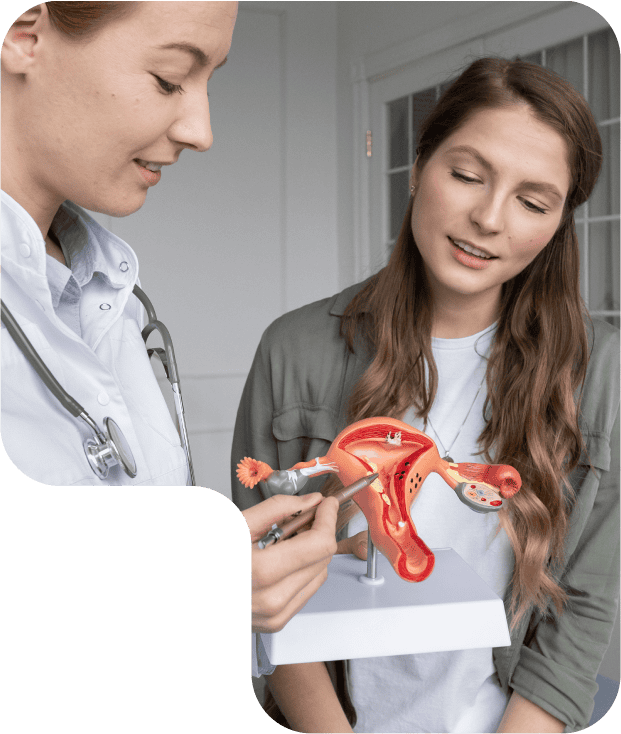
 WITH OVER 13 YEARS OF EXPERIENCE
WITH OVER 13 YEARS OF EXPERIENCE
